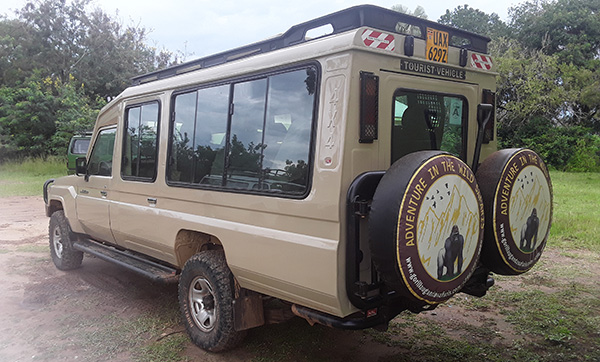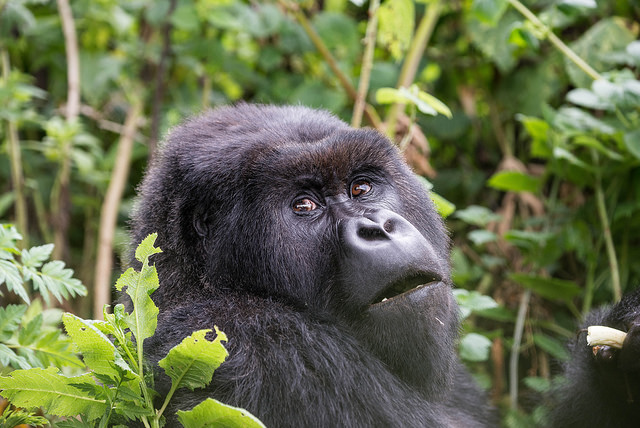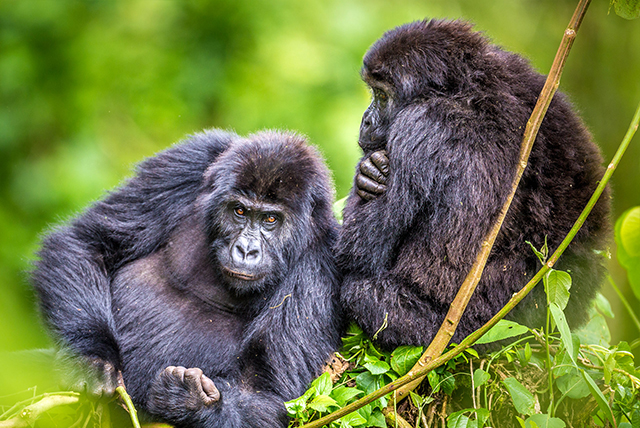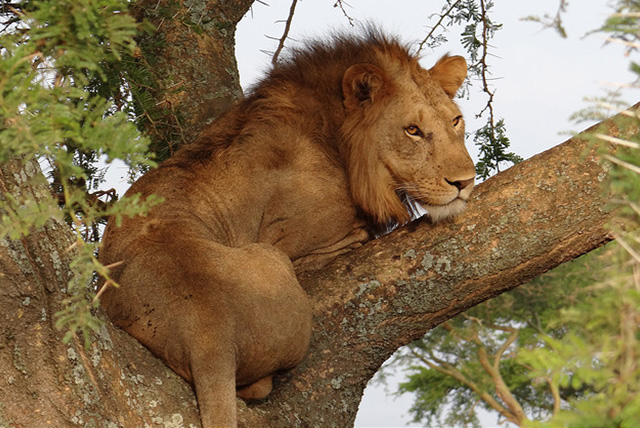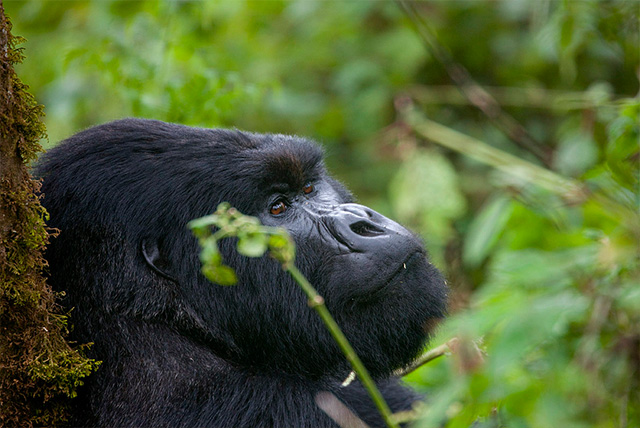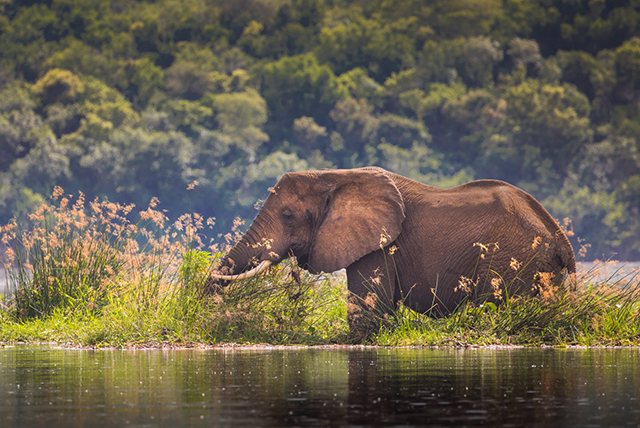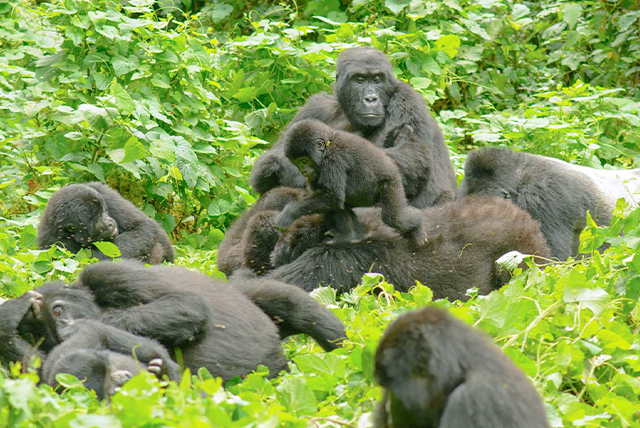Zimbabwe National Parks
Zimbabwe National Parks
The inaugural Game Reserve was Wankie, now known as Hwange NP, established in 1928 and enhanced by the 1949 National Parks Act. The Game section of what was once Rhodesia came into existence in 1952, established as a branch of the Department of Mines, Lands and Surveys. This was the core that evolved into the Department of National Parks and Wildlife Management in 1964.
One remarkable outcome of colonialism was the Parks and Wildlife Act of 1975, a significant milestone for conservation. The fundamental way in which people viewed wildlife underwent a transformation. According to the Act, the ownership of wildlife transitioned from the State to the individuals who owned the land where the animals resided.
As the landowners, whether communal or private, took on the role of guardians for the wildlife, a transformation in perspective unfolded. People started to recognize their wildlife resources as a treasure to be cherished, safeguarding their advantages for generations to come. Over time, the once troublesome elephant and zebra became fascinating creatures to observe; the herds of impala transformed from mere prey into a captivating sight.
Within the Parks and Wildlife Act, different tiers were established for the safeguarding and use of state-owned land. The old Game Department that once issued hunting licenses has vanished, which, for a small fee, permitted settlers to pursue wildlife in nearly every area except for a handful of Game Reserves. A network of National Parks, Botanical Reserves and Gardens, Sanctuaries, recreational Parks, and Safari Areas was established with great enthusiasm. Since 1975, the Act has undergone changes and improvements, fostering the growth of an engaging wildlife-protection process.
Numerous African nations have embraced this philosophy over time. The original Act has had an incredible impact, now embodying numerous elements of community-driven conservation efforts taking place around the globe. Communal or traditional tribal areas and privately-owned land were also classified for various levels of use.
Communal areas brimming with remarkable wildlife resources or adjacent to National Parks were granted Rural Council status, leading to the creation of CAMPFIRE (Communal Areas Management Programme for Indigenous Resources). CAMPFIRE has evolved into a vital conservation approach, guaranteeing that substantial financial gains flow back to rural communities for their advantage. This philosophy has been embraced across the African continent and is gradually making its way into Asia and South America as well.
Zimbabwe is home to a variety of National Parks that are celebrated across the globe, including the iconic Victoria Falls, Mana Pools, and Hwange. However, the country also boasts hidden treasures like Chizarira and Gonarezhou, waiting to be explored. Sections of the Rhodes Estate, created through Rhodes’ will in 1902, were gifted to the nation for the purposes of farming, forestry, and agricultural research. This terrain eventually transformed into the rugged Matobo and the towering Nyanga National Parks.
Zimbabwe’s Parks provide an exciting range of accommodation options, and it is wise to confirm availability with the Parks Department Reservations Office in Harare, as popular spots like Mana Pools tend to fill up quickly. Stay options range from well-appointed lodges, charming cottages, and cozy chalets, to inviting camping and caravan sites.
The 1975 Act not only sparked a transformation in perceptions of wildlife but also encouraged the growth of one of Africa’s premier tourism infrastructures. It recognized the necessity for skilled and knowledgeable guides and hunters (a concept that has been widely imitated), the creation of enduring leases for operators in both National Parks and Safari Areas, the advancement of conservancies on private land, and collaboration with local communities. It was the forerunner of sustainable travel in its purest form.
Nevertheless, the Department of National Parks has consistently been viewed as a lesser priority within the government and has faced challenges due to insufficient funding – a significant oversight when one reflects on the potential revenue that the Parks could generate. In recent years, the Department has gained parastatal status, allowing it to keep a considerable share of the revenues it generates, at least in theory.
The ongoing turmoil in Zimbabwe and the subsequent decline in tourism will significantly impact the management and upkeep of the National Parks and the wildlife they aim to safeguard. The past year’s turmoil has led to a troubling rise in poaching across numerous national parks. If this continues, the NPs might struggle to support the country’s economic recovery.
Chimanimani, a sprawling 17,100ha in Zimbabwe’s Eastern Highlands. The ancient quartzite mountains, aged 1.6 billion years, stand majestically in three closely-knit ridges, reaching heights of 2440m. Carved by profound ravines featuring ever-flowing streams and cascading waterfalls.
Primarily arid montane forests featuring cedar and yellowwood, soaring above the expansive grasslands. Here, you can find a vibrant array of proteas, aloes, and their fascinating relatives thriving in the landscape. Vibrant lichen clings to rugged granite cliffs, while ferns, mosses, and orchids thrive in the lush embrace of the forests. Various species of antelope, particularly the klipspringer and the elusive Blue duiker. 200 bird species, featuring unique ones like Gurney’s sugarbird. There are no roads, but a fantastic array of footpaths and trails awaits exploration. Exploring trails and scaling peaks. Exciting opportunities for swimming, fishing for trout, and exploring a sanctuary for elands await you. A shared refuge for hikers, along with various camping spots and intriguing caves to explore. Accommodation options in the vibrant Chimanimani village.
Chizarira
Established in 1938, designated as a national park in 1975. Zimbabwe’s most secluded park spans 192,000 hectares, located 50 kilometers south-east of Lake Kariba. Chizarira, meaning ‘barrier’ in Batonka, is tucked away behind the towering 600m msasa-wooded Zambezi escarpment. Mopane stands and grasslands intertwined with rugged ridges and profound gorges. The Busi Valley to the south is characterized by expansive flood plains.
The vast plains and flood plains are home to the Big Five, featuring around 12,000 elephants, herds of 200 to 400 buffalo, and a variety of antelope. Among the avian wonders are three remarkable species: the Bat hawk, Livingstone’s flycatcher, and the elusive Taita falcon. Untamed and rugged terrain perfect for off-road exploration. Exciting game drives and immersive wilderness trails lasting up to 10 days. Summer brings intense heat (October – January). No permanent lodging, just four unique, essential camps. Two exclusive safari lodges at the edge of the wilderness.
Gonerezhou Established in 1975, by merging 5000km2 of previous hunting grounds and tsetse fly management zones. It shares its boundaries with Mozambique and South Africa.
Sun-baked, arid terrain dotted with rugged granite formations. Three mighty rivers carve through its arid scrubland. The largest, the Runde, is bordered for 30km by the stunning, red sandstone Chilojo Cliffs. Mopane, ironwood, and baobab stand tall and proud. There are a variety of grasslands waiting to be explored.
Gonarezhou signifies ‘the land of the elephant’ – home to over 6000 of these majestic creatures. They are bigger, possess greater amounts of ivory, and due to poaching and harassment, exhibit a heightened level of aggression compared to other regions. A plethora of diverse wildlife. 230 bird species await discovery, including two remarkable rarities: the Angolan pitta and the Mashona hyliota. The fascinating Lungfish and Zambezi sharks inhabit the rivers.
Wild, unrestrained, and scorching terrain (over 40ºC in summer). A network of game-viewing roads awaits, though many call for a sturdy 4×4 to navigate their thrilling paths. The 4-5 day trails explore the heart of Africa. Base camp featuring charming thatched chalets. Wilderness spots, a few rustic, beside the flowing rivers. Numerous exclusive lodges are situated throughout the park.
Hwange
Once the realm of Matabele Kings, this expansive 14,650km2 park was established in 1949. Known for its remarkable diversity and abundance of wildlife.
Perched on the edges of the vast, sun-scorched Kalahari sands. Fossil dunes and rivers reveal the area’s fascinating past as a desert. Granite kopjes rise majestically in the north. Pans are nourished by water drawn from boreholes. With a remarkable variety of 1100 plant species, this area boasts 260 types of trees and shrubs, including the notable acacia, mopane, and teak.
107 mammal species, including the iconic Big Five, 25 diverse predators, and 16 unique types of antelope. Between 20,000 and 30,000 elephants journey between this area and Chobe National Park in Botswana. More than 430 species of birds. 500 kilometers of winding roads and numerous waterhole viewing platforms and hides await exploration. Organizations and adventurers conduct game drives, mobile safaris, and 2-8 day walking excursions.
Three camps offer a variety of lodges, cottages, chalets, camp sites, a restaurant, shop, and bar. Four additional unique bush camps reachable by 4×4. A hotel and several exclusive lodges, primarily upscale, are situated within the surrounding estates and concessions.
Kazuma
A vast 331,300ha reserve, initially established in 1949, saw its status revoked in 1964, only to be brought back to life in the mid-’70s. Situated to the north-west of Hwange, right along the Botswana border. Kazuma’s heart is a vast, inviting expanse, brimming with the essence of the wild. The local pans overflow with water during the rains. The vast expanse of Kalahari sands shapes the landscape.
Many types of wildlife can be found here, though in fewer numbers. Home to Zimbabwe’s unique gemsbok and oribi. A thriving population of lions and cheetahs. A diverse array of waterfowl makes their way to the pans. Secluded, tranquil, and offering stunning views, the park presents fantastic opportunities for wildlife observation without the hustle and bustle of large crowds. Two rugged camping spots. One company organizes camping trips that span 2 to 4 days. The nearest place to stay is at Matetsi or close to Victoria Falls.
Mana Pools
Earned NP status in 1975. Nestled beneath Lake Kariba: 2200km2 with 70km of Zambezi shoreline. The winding Zambezi carves out lush alluvial flood plains and terraces. The valley floor is adorned with inland pools, expansive grasslands, and diverse woodlands. A distinctive environment brimming with delightful grasses, vibrant scrub, and expansive woodlands. Supports a vast array of games – giraffe, wildebeest, and hartebeest are notably excluded for reasons that remain a mystery. 12,000 elephants, 8,000 buffalo, and countless hippos and crocodiles. 380 diverse species of birds found in water and woodlands. African skimmers and Carmine bee-eaters find their nesting grounds here, while Fish eagles are a familiar sight.
Access is limited; Mana welcomes guests exclusively during the dry season from April to November. Experience thrilling game drives, explore on unaccompanied walks, enjoy fishing, and dive into the excitement of canoeing. Approximately 12 operators provide thrilling 5-day excursions along the river. NP camping spots and several chalets by the river and further inland. Two exclusive retreats featuring outdoor bathtubs and bars by the river.
Matobo is a vast expanse of 43,200 hectares, rich in cultural and natural significance. A contender for the prestigious World Heritage designation. Here lie the remains of King Mzilikazi and Cecil Rhodes, two figures whose legacies are steeped in remarkable tales.
The resemblance between the sleek granite, whaleback boulders (dwalas) and the polished domes of his warriors inspired Mzilikazi to call them amatobo – ‘the bald ones’. Wondrous rock towers, sculpted by the forces of nature, hold countless smooth-walled caves waiting to be explored. Below stretch lush valleys, winding streams, and vibrant marshlands waiting to be explored. A vibrant tapestry of plant life awaits, featuring a multitude of trees and shrubs, including some that are unique to the area, along with lichens, aloes, wild herbs, and a stunning array of over 100 grass species.
More than 175 species of birds, 88 species of mammals, 39 species of snakes, and 16 species of fish. Africa boasts an incredible abundance of Black eagles, and likely leopards as well. Enjoy breathtaking drives and fantastic opportunities for hiking and horseback riding through the rolling hills. Rock paintings from the Stone Age showcase an astonishing variety and lively expression. Well-appointed lodges, charming chalets, inviting camping spots, and a cozy guesthouse. Private lodges along the edge provide exciting tours. Matusadona
A sprawling lakeshore park covering 1407km2, located just 20km from the vibrant town of Kariba. Ideal for a journey by boat. Carved by the wild Zambezi escarpment. Surrounded by the lush valleys of the Ume and Sanyati Rivers, both partially embraced by the waters of Lake Kariba. A vast plateau adorned with open, mixed woodlands, vibrant jesse bush, and expansive plains featuring lush swards of torpedo (panicum) grass.
Approximately 300 animal species roam the land, featuring the iconic Big Five, along with crocodiles, hippos, and cheetahs. 240 unique bird species, including numerous Fish eagles; at least 20 varieties of angling fish.
Embark on a thrilling 3-4 day backpacking journey, complete with guided game-viewing hikes and exhilarating boat trips through the stunning fjord-like Sanyati Gorge. Private safari lodges and three unique camps await your exploration. Charming overnight huts and camp sites await exploration. A CAMPFIRE project serves up authentic Shona cuisine.
Nyanga
47,000 hectares of Zimbabwe’s Eastern Highlands. Named after Mount Inyangani, known as ‘the shaman’s horn,’ which stands tall at 2593m. Majestic granite mountains rise, giving life to numerous grand rivers that create breathtaking cascades, including the impressive 243m Pungwe Falls. Expansive landscapes, rolling valleys, dramatic gorges, and serene lakes. Brachystegias and other native trees still stand tall, yet many hillsides are now adorned with exotic species like pine, eucalyptus, and wattle. Aloes (one endemic), proteas, wildflowers, and lichen flourish in abundance.
A variety of antelope, playful Samango monkeys, and an array of birds, featuring the elusive Marsh tchagra, the stunning Narina trogon, and majestic eagles. Exploring the great outdoors, scaling peaks, and wandering through scenic pony trails. Ancient stone formations, fishing for trout, navigating the waters, and enjoying a refreshing swim. Five hotels, numerous holiday cottages, park lodges, and campsites await in this easily accessible park.
Zambezi spans 56,000 hectares, boasting a 40-kilometer stretch along the Upper Zambezi. Stretches 24km into the heart of the land. Traversed by the primary route leading to Botswana. The Zambezi flows over a series of thrilling rapids carved into the ancient basalt rockbed. The often parched tributaries of various streams weave through the Kalahari sands of the parks. Majestic trees and Ilala palms line the banks of the Zambezi. Inland, vast grasslands stretch out, interspersed with clusters of mopane, mukwa, and teak trees, inviting exploration and discovery.
Zimbabwe is home to a diverse array of mammal and bird species, with many thriving in substantial populations. Hippo and crocodile always around. 90km of roads for spotting wildlife, a platform for taking in the sights, 25 picnic spots, and 3 fishing locations. Private operators provide exciting guided drives, invigorating walking and horseback trails, and thrilling canoe trips. The Department of National Parks offers a variety of riverbank bungalows and five essential camp sites within the park. A plethora of hotels, lodges, and tour operators await in and around the vibrant Victoria Falls village.

